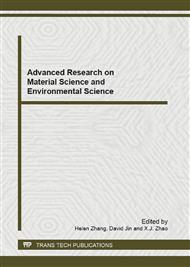p.281
p.285
p.289
p.293
p.298
p.304
p.309
p.314
p.318
Research on Optimal Formula of Dustfall Agent to Remove Blasting Smoke
Abstract:
In order to reduce dust produced during the blasting, effective measures according to smoke components and properties are required to be taken. The experiment adopted a number of base materials and surface-active agents to reduce the dust in smoke. Besides, corresponding additives were adopted to reduce poisonous and harmful gases during the blasting. Experiments focused on wettability and surface tension, using contrast experiment to determine optimal base material and surface-active agent, and also studied the influence of additives on their performance. The experimental results suggested that: sodium chloride was the optimal base material, sodium dodecyl benzene sulfonate was the optimal surface-active agent, and copper sulphate and ammonium chloride as additives had almost no influence on performance of surface-active agent and base material. Therefore, adding this dustfall agent to the water bag during the blasting can effectively reduce the concentration of smoke.
Info:
Periodical:
Pages:
298-303
Citation:
Online since:
June 2012
Authors:
Keywords:
Price:
Сopyright:
© 2012 Trans Tech Publications Ltd. All Rights Reserved
Share:
Citation:


